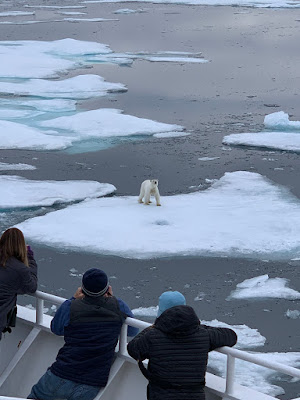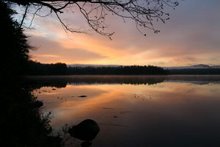

It includes two graves up on the hillside.

The shoreline was covered with kelp and some ice.

The tundra plants and lichen were neat. This is a willow.

And this is related to blueberry.


Then we took the zodiacs to an ancient Thule dwelling site and walked among the home sites. This would have been a home dug into the earth with walls of sod and a sod roof supported by whale bones.

This is the entrance tunnel.


The weather was predicted to deteriorate, so in the afternoon we went out into open water to get to eastern Ellesmere island by morning. The water was very rough and I ended up taking Bonine.











































